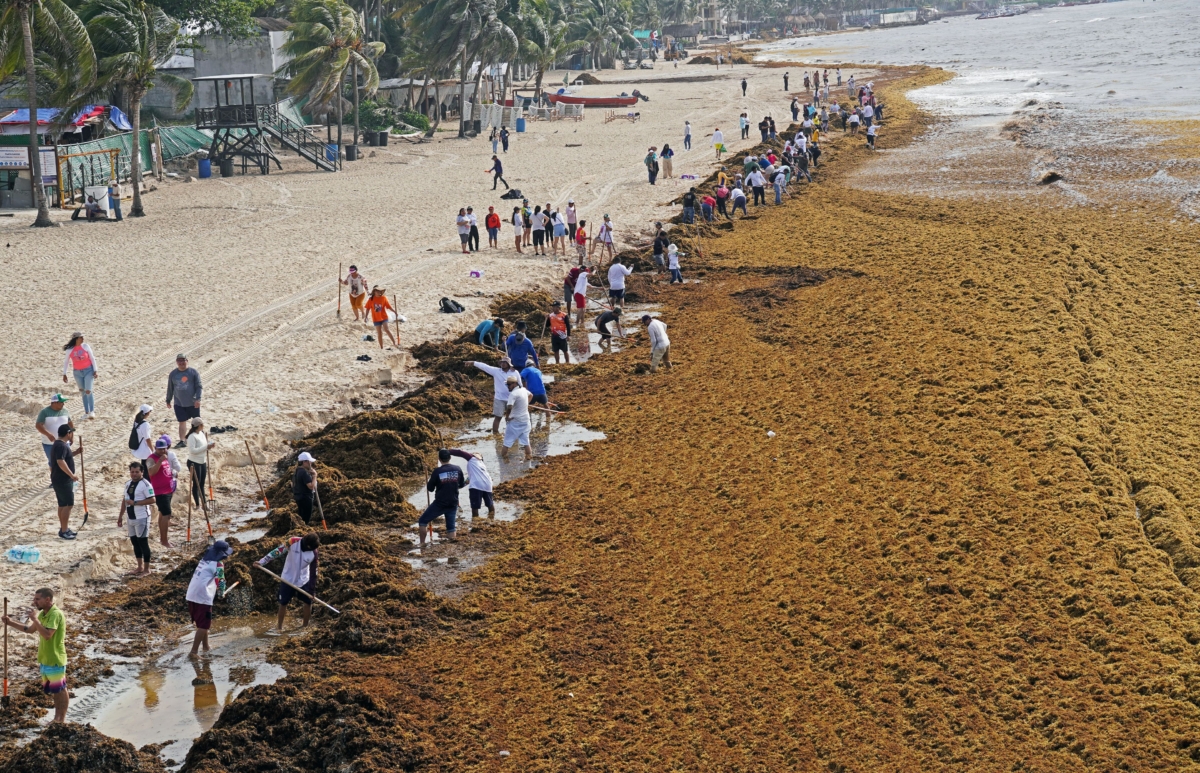The Plan to Turn the Caribbean's Glut of Sargassum Into Biofuel
Aug 18, 2025 5:00 AM
With record-breaking quantities of the seaweed set to hit Mexico’s beaches, experts propose converting it into biogas and construction materials, as well as using it to underwrite carbon credits.

Photograph: ELIZABETH RUIZ/AFP via Getty Images
IN the Caribbean, summer is supposed to be the season of sun, sand, and crystal clear waters—for decades, Mexican vacation destinations like Cancun, Cozumel, and Tulum have been synonymous with paradise. But then the sargassum began to arrive. For the past 15 years, large quantities of this brownish-colored seaweed have been invading beaches around the Gulf of Mexico every summer, its arrival from the open seas coinciding with high tourism seasons.
Forecasts from the Optical Oceanography Laboratory at the University of South Florida indicate this summer could be the worst on record, with up to 400,000 tons of sargassum predicted to wash up on Mexican coasts. As well as covering up the sand and spoiling the appearance of the country’s pristine beaches, the seaweed releases gases as it decomposes—toxic hydrogen sulfide, as well as the greenhouse gases methane and carbon dioxide.
A study by the Inter-American Development Bank estimates that sargassum drives down local GDP by 11.6 percent in Quintana Roo, the coastal state home to the tourist hot spots of Cancun and Playa del Carmen. The Mexican hotel sector says that it costs them more than $100 million a year to clear sargassum from beaches.
Exactly what’s causing so much seaweed to flood the Caribbean remains a debated topic. Experts have pointed to warmer ocean waters, ever increasing amounts of agricultural fertilizer flowing into the ocean, and changes to ocean currents as potential culprits. But the definitive cause of these algal blooms has yet to be pinned down.
More:
https://www.wired.com/story/there-is-more-sargassum-than-ever-in-the-caribbean-and-they-want-to-turn-it-into-energy/
